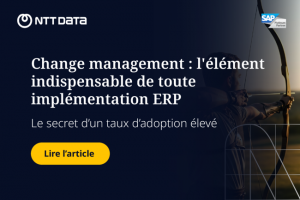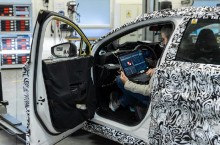CIO en VO : Migrer d'Unix vers Linux, oui, mais pas trop vite
Nos confrères américains de Computerworld se sont penchés sur le sujet de la migration des serveurs utilisant des unix propriétaires (HP-UX,...) vers Linux. Si les avantages existent, il ne faut cependant pas trop en attendre et donc ne pas y aller trop vite.
PublicitéMigrating business applications from high-end Unix-based systems such as Sparc/Solaris to commodity x86/Linux platforms has been a popular idea for the past few years, but not everyone thinks going full-on with Linux is the best solution -- at least not yet. Dan Blanchard , vice president of enterprise operations at Marriott International Inc., is serious about Linux. He says his company's transition from high-end Unix-based systems from Hewlett-Packard Co. and IBM is ongoing -- and inevitable. "We're migrating, and we have a strategy to continue deployment of Linux," he says. Tony Iams hears that refrain from IT executives frequently. "Companies have had a long-term goal of consolidating all of their Unix systems onto Linux," says Iams, an analyst at research firm Ideas International Ltd. The companies want to consolidate on industry-standard technology across the board, he says, and that means Linux running on x86 hardware. But Norm Fjeldheim, CIO at Qualcomm Inc., decided to take a pass on a Solaris-to-Linux migration. The company does use Linux for some applications, but Fjeldheim's IT team concluded that migrating its industrial-grade Solaris systems to Linux was a dubious business proposition. "We're not moving from Sun to Linux. We haven't been able to make the economic case for it," he says. While it appeared at first glance that Qualcomm would save money upfront on hardware and operating system costs by migrating, the price comparisons offered by vendors were based on retail prices. "We don't pay retail, [and] when we figured our discounts [with Sun Microsystems], the price advantages went away for Linux pretty fast," Fjeldheim says. And that wasn't the only issue. His team wasn't satisfied with the quality of the administrative tools available for the Linux environment. At the time Qualcomm's IT staff did the assessment -- some 18 months ago -- the things that make an administrator's job easier "really didn't exist to the same degree in Linux as they did on Unix-based systems," Fjeldheim says. And that, he adds, would have translated into larger administrative costs. As director of IT at Qualcomm, Matthew Clark was part of the team that reviewed the Linux option. The company's ratio of administrators to users is currently 500-to-1 (although he plans to lower that to about 450-to-1). "With Linux, it would have been 150- or 175-to-1. We would have had to hire three additional administrators for every administrator we have right now working on Unix," he says. Iams isn't surprised to hear that assessment. "That's traditionally been one of Sun's strong points," he says. "They've optimized their systems for that metric." Clark acknowledges that the administrative tools have improved since Qualcomm last reviewed its Linux options, but he still thinks Linux would be more costly. "If we started today with the new [tools] coming out, we might be in the neighborhood of two [admins] for every one," he says. Although the numbers didn't add up for Linux as a Solaris replacement, Clark said he's impressed with Linux's overall capabilities and believes the operating system will continue to have a place at Qualcomm. "We like the performance, and we recognize that throwing a whole bunch of little boxes at things can work really well in certain applications," he says. Not for Everyone Blanchard agrees that Linux doesn't work for every application. In some cases, he has seen Marriott's IT team look at a Linux migration and decide not to proceed. Overall, the applications moving to Linux at Marriott tend to be high-end Unix systems, he says, and the Linux-based tools that are replacing them are sufficient for Marriott's needs. "We started talking about enterprise-class Linux systems 10 years ago," Blanchard says. "It took a while to get that up and running." It also helps that Marriott's IT vendors are supporting the initiative. Rather than trying to persuade the hospitality company to stay on Unix systems and high-end server hardware, both IBM and HP have been helping to make those migrations go smoothly. "Our vendors are very comfortable with this transition," Blanchard says. For now, however, Unix systems are still very much in the mix as Marriott plans migrations on a case-by-case basis. "We do not have a strategy to just close our eyes and go with one particular platform to the exclusion of all others," Blanchard says. For its part, Qualcomm is getting more bang for its buck from its Solaris 10 systems by taking advantage of the operating system's virtualization technology, Solaris Containers. That feature was also responsible for stopping Bank of New York Mellon's Linux transition plans. Dennis Smith, first vice president in the bank's advanced engineering group, says that when he started planning last January, he anticipated a wholesale "replatforming" of all of the Solaris systems at the bank onto Linux servers. That hasn't happened. After transitioning a few systems, Smith decided to bring Sun back in to talk about potentially using its virtualization technology, and he began to experiment with Solaris Containers. "We're in the middle of that now," he says. Sun's Containers technology, which creates virtual machine instances that share a single copy of the operating system, can make for a compelling economy-of-scale argument, Iams says. It can scale much better than VMware , it's more mature than Parallels' Virtuozzo, and it's supported by Sun as part of the core operating system. With Containers, he says, "you have a much smaller footprint per instance, so you get a much higher level of consolidation. While you might [have] a few dozen [VMs per physical server] with VMware, with Containers it's hundreds -- or even thousands -- per server." Smith saw enough of a benefit from Containers to change his plans, but he's still keeping Linux in the picture. "We won't be as aggressive in replatforming to Linux as we initially thought," he says. But, he adds, "we feel that both platforms will have a place in our infrastructure." Robert L. Mitchell - ComputerWorld - IDG News Service
Article rédigé par
ComputerWorld USA










Commentaire
INFORMATION
Vous devez être connecté à votre compte CIO pour poster un commentaire.
Cliquez ici pour vous connecter
Pas encore inscrit ? s'inscrire